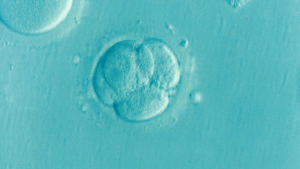Human embryonic cells created for developmental research
Biología, Innovación, Research and Innovation
células embrionarias, desarrollo embrionario
12 September 2022
A research group at the Belgian University of KU Leuven has succeeded in manufacturing a new type of human embryonic cell from stem cells in the laboratory that closely resembles the natural cells of human embryos. This advance, published in the journal Cell Stem Cell, represents a specific study model of what happens just after a human embryo is implanted in the uterus.
In normal situations, a human embryo implants in the uterus about seven days after fertilization. At that point, due to ethical and technical limitations, the embryo becomes inaccessible for research. For this reason, the scientific community has developed different stem cell models for embryonic and extra-embryonic cell types to study human development in the laboratory.
Now, Vincent Pasque’s team has developed the first model for a specific type of human embryonic cell, the cells of the extraembryonic mesoderm. “These cells generate the first blood in an embryo, help attach the embryo to the future placenta, and play a role in the formation of the primitive umbilical cord. In humans, this type of cell appears at an earlier stage of development than in mouse embryos, and there could be other important differences between species. That makes our model especially important: research in mice may not give us answers that also apply to humans,” says Pasque.
In the long term, the research group hopes this model will shed more light on medical challenges such as fertility problems, miscarriages, and developmental disorders.

